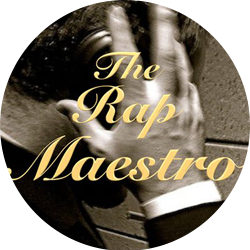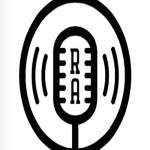—by Nigel Telman
If I were about a decade or so older I would say that this song—”Mic Checka,” by Das EFX (which you can hear online here)—definitely takes me back. And not just because of the iconic production going on, courtesy of Solid Scheme. No, I’d say that this song is a great throwback song because of the way every verse relies on the reproduction of that patented old-school record-scratching sound. When Krazy Drayz says “Riggidy-raow”, that’s exactly what he’s doing, and the fact that he builds a whole verse off of alliterations to that onomatopoeia speaks immensely to the tightness of his flow and musical sense. You can look at Krazy Drayz’s use of onomatopoeias as the basis for his rhyme scheme as a meta-artistic idea: he’s rhyming alike sounds in the word for a sound – “Fliggidy-flame”, “Biggedy-burn”, “Riggedy-rubber” etc.
I’m fascinated by this use of an onomatopoeia because it is one of the oldest songs I’ve heard where the rapper seems acutely aware of the musical space his lyrics occupy in the song. Since the prefix “Riggedy/fliggedy/biggedy” etc. have no meaning on their own, they serve a purely aural purpose: inserting the rapper into the sound of the production. Krazy Drayz and the rest of the rappers on the track explicitly state their position in “Mic Checka” by relying on this “iggedy” sound, this reproduction of the old-school record scratch.
That “iggedy” sound also serves as a place holders for other sounds. If they perhaps had too little syllables in a line for it to work, they very well could’ve thrown in an “iggedy” to keep the flow tight. Other hip hop acts realized this too! Nonesense words as placeholders were not used as impressively nor as effectively before Das EFX’s usage of them. After them, artists like Fu-Shnicken and Jay-Z started to adopt them*, although the trend has since died for the most part.
Now turning to the overall rhyme schemes at play in this first verse there isn’t much in terms of complicated rhyming or especially clever phrases. The most syllables Krazy rhymes in the first verse is three, and those are rhymes with words that are practically identical! Aside from the “iggedy” parts, Krazy rhymes “savage” with “average”, “go, so” with “Geronimo, yo”, “Bamm-bamm” with “Slam, man” and “aw shucks” with “Warbucks”. These constitute the largest number of syllables he rhymed at a time.The structure of his rhyming doesn’t innovate too much either. Krazy relies heavily on his rhymes with “iggedy”, his scattered alliterations and use of assonance/consonance throughout (which, admittedly, is pretty cool-sounding like “rubber” and “blabber”, “biggedy-breakin’ backs and bustin” etc.) while using end-of-bar (rhymes that occur as the very last syllable of a measure)/bar crossing rhymes (rhymes that occur between the end of the last measure and the beginning of the subsequent measure) to metaphorically “tie a bow” around each lyrical package. Within each lyrical package, there does not appear to be a rhythmic order to the rhymes. Besides the end-of-bar rhymes that group lines in couplets, Krazy seems to employ a system of rhyming closer to that which Martin once called through-composed writing, or “creat[ing] the rhythm of the poetic accents of… verse all the way through, one at a time”. Thus there is no discernible rhythmic phrasing or rhyme pattern, which makes the song harder to memorize/rap to (go ahead, try it. I’ll wait), Another fascinating aspect of this song is Krazy’s use of space. Space is a concept that comes up often in the musical world. As Miles Davis said, musicians shouldn’t “play what’s there, play what’s not there”. Krazy completely adheres to this guiding principle, throwing in weird, off-beat pauses and short stops between words and rhymes. Even the way he says “iggedy” is different each time, staggering the space between each syllable in an almost-awkward way. However it ends up sounding incredibly innovative and hip.
In summation, we’ve just explored a rapper with a tight grasp of the musical nature of hip hop. Rather than simply spitting over a beat, Krazy explores the space of the production (with his “iggedy” homage-to-the-record-scratch sound) and the space within his own lyrics (changing up the way he says “iggedy”, leaving musical spaces between words in places where they wouldn’t generally fall in normal interactions). Krazy Drayz cements himself in this song as a high-quality MC with a strong musical sense. And there’s nothing I love more than hearing a musical rapper.


 Join the weekly RapAnalysis newsletter at
Join the weekly RapAnalysis newsletter at